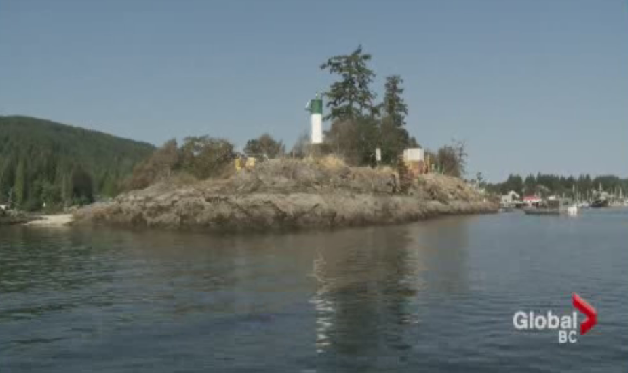SALT SPRING ISLAND – Crews will soon deconstruct a partially built home on a sacred burial site off Salt Spring Island, B.C., after a multimillion-dollar deal with the landowner.

Construction on a Grace Islet house started last fall after the landowner got the necessary permits, but First Nations raised concerns about the historical significance of the area.
Work stopped in December, and the land was transferred to the Nature Conservancy of Canada after the B.C. government paid the landowner $5.45 million.
Linda Hannah, the nature conservancy’s regional vice-president, said Monday that the house was at the framing stage when the order to stop work was issued.
She said cultural workers will be at the site to ensure that 16 cairns beneath the foundation are not disturbed.
Hannah said elders from eight First Nations will provide guidance on the deconstruction process in an area that is also known for its 200-year-old juniper, Garry oak and Douglas fir trees.
WATCH: Province to buy Grace Islet:
Chief James Thomas of the Halalt First Nation in Chemainus said he and other leaders approached the province and the Capital Regional District when they became aware of the project in 2012.
However, he said B.C.’s Heritage Conservation Act, which is supposed to protect archeological sites, seemed to lack any power when it came to stopping the construction on Grace Islet.
“They just kept moving forward with it even though we were fighting it and showing it was an actual burial site,” he said.
“We were trying to block the barge from coming in with timber and everything to build it,” he said.
The eight First Nations do not know whose ancestors are buried at the site, he said, adding: “Different tribes would use that area for hunting and fishing.”
Cowichan Tribes Chief William Seymour said the First Nation is pleased that the matter has now been resolved through collaboration with the provincial and local governments.
“Although there is some cause for celebration, we are also mindful that this is solemn work,” he said in a statement.
Capital Regional District director Wayne McIntyre said the work ahead is aimed at restoring the site to its natural state and keeping it that way.
“Grace Islet illustrates the critical importance of improving the heritage protection permitting process to ensure the preservation of the cultural history and protection of the resting places of indigenous ancestors,” he said in a statement.



Comments